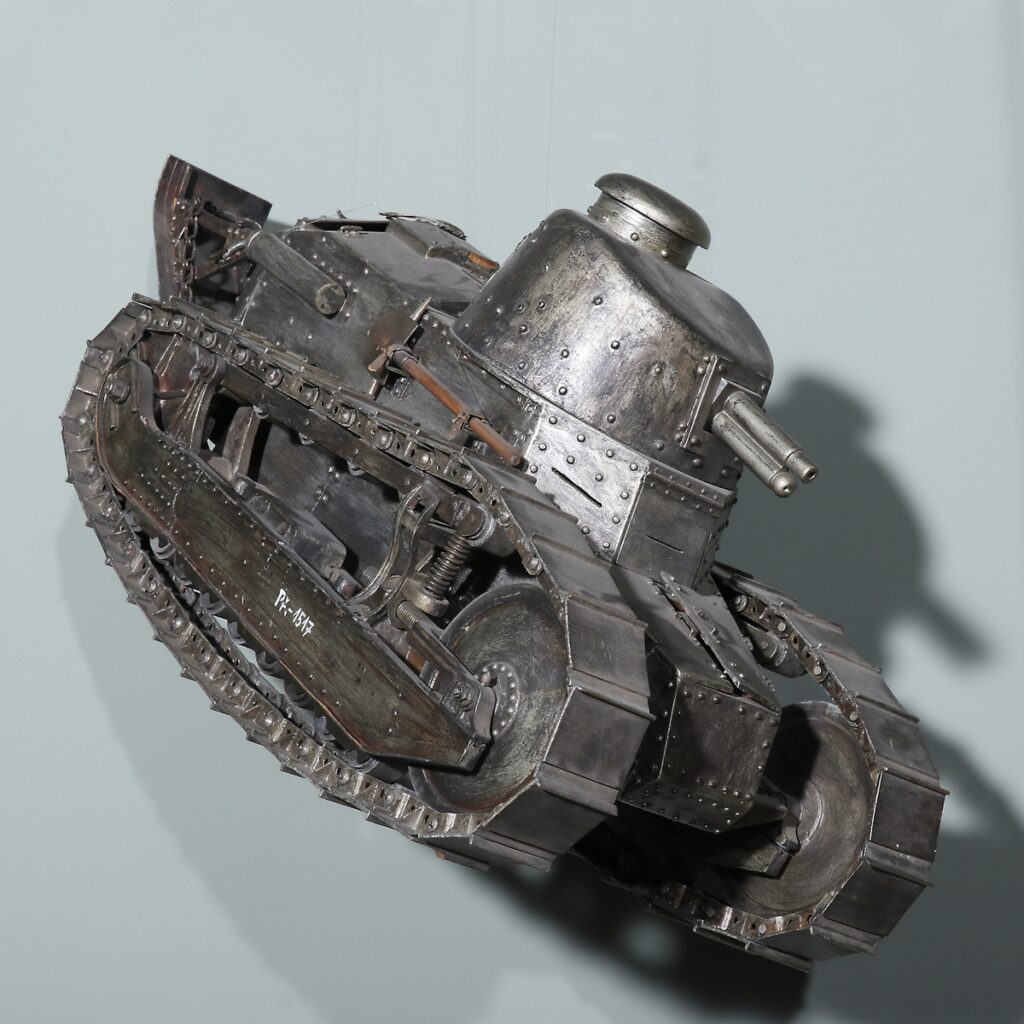
02 Model of French Light Tank Renault FT 17
Fotogalerie
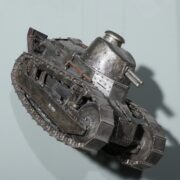
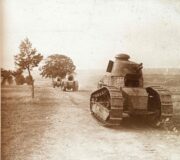
Starting on 15 September 1916, a new combat device appeared on the battlefields: the tank. The first to use a tank in the effort to resolve the hopelessness of trench warfare was the British army.
Two British designers, Ernest Swinton and Maurice Hankey, invented this new weapon. The stalemate of trench warfare instigated the idea of landships that was soon supported by the First Lord of the Admiralty, Winston Churchill
France did not lag and started to develop and manufacture its own tanks. The first French tank, Schneider CA-1 (Char ďassault), was deployed in great numbers for the first time on 16 April 1917, at the battle of Chemin des Dames. Initially, it had been designed as an armoured caterpillar tractor to tow sledges through the German trenches on the Western Front. Its design was based on the American agricultural tractor Holt.
The first tank that became later the most widely used, with weaponry placed in a revolving tower, was the French tank Renault FT from 1918. With more than 3,500 vehicles, it became the most mass-produced tank of World War I. It carried either a 37 mm canon or a 7.92 mm machine gun. It was armoured with 6 to 16 mm thick metal plates and weighed 6.5 tonnes. With an engine output of 35 horsepower (26 kW), it reached a maximum speed of 8 kph, and its full-tank range was 35 km. There were only two men to serve as crew.
Aktuálně
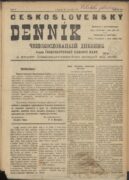
Československý deník sehrál v životě legionářů v Rusku velmi důležitou roli. Poprvé vyšel v prosinci 1917

Děkujeme za podporu pro válečné veterány. Sbírka DiGiMÁK vynesla 450 tisíc korun
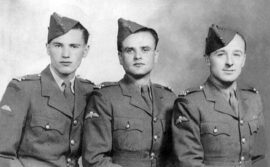
Tak trochu zamrzlé spojení
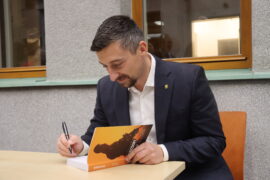
Válečný veterán Petr Matouš pokřtil v Armádním muzeu Žižkov svou knihu. Patronkou je i ministryně obrany Jana Černochová








